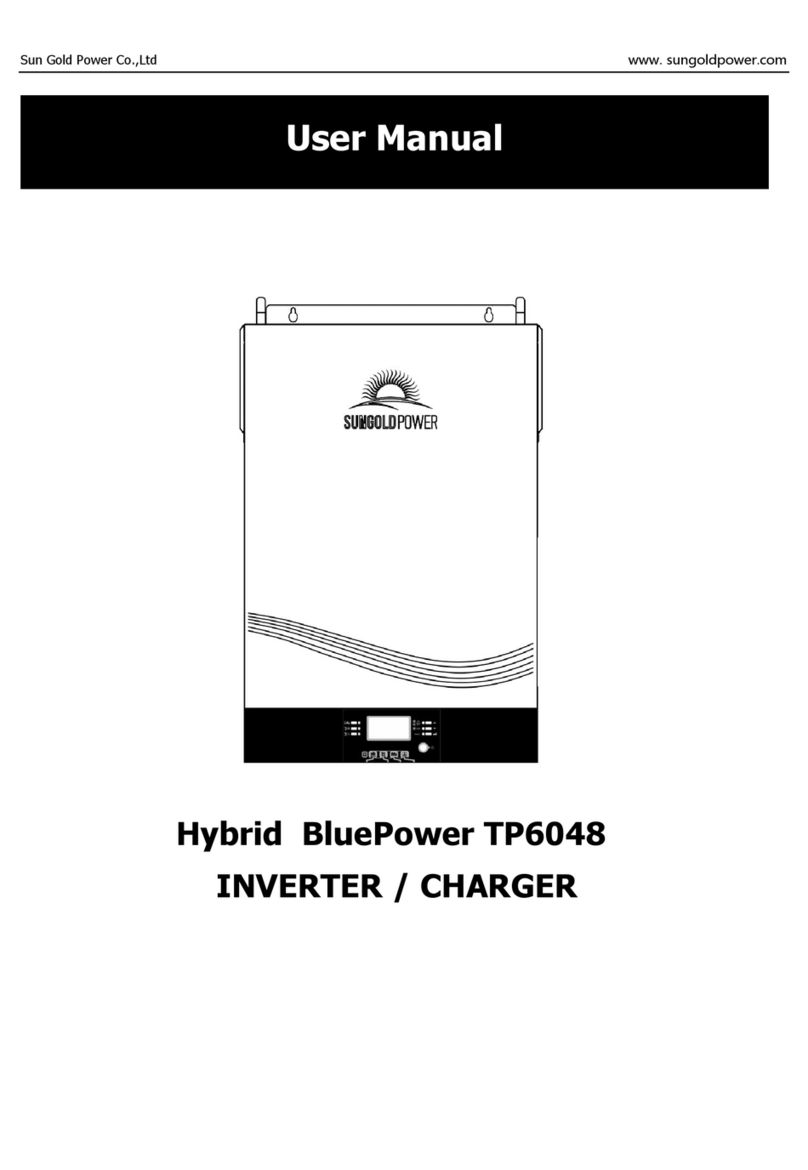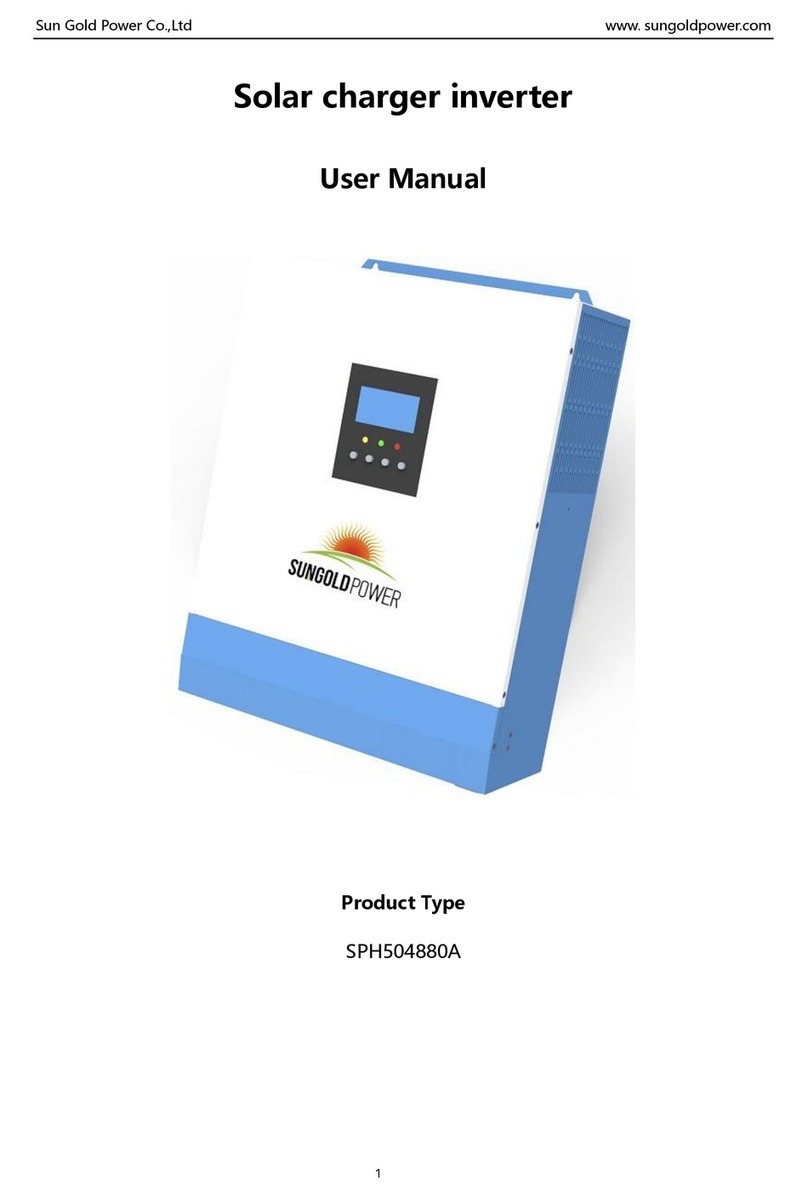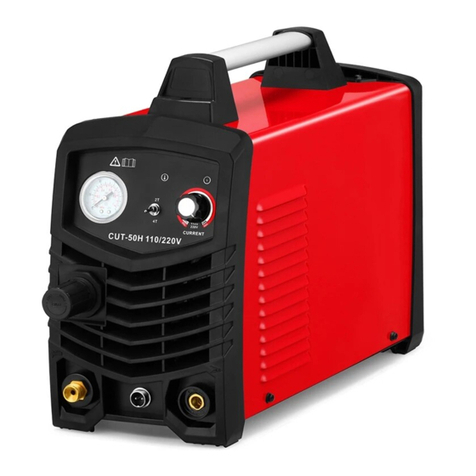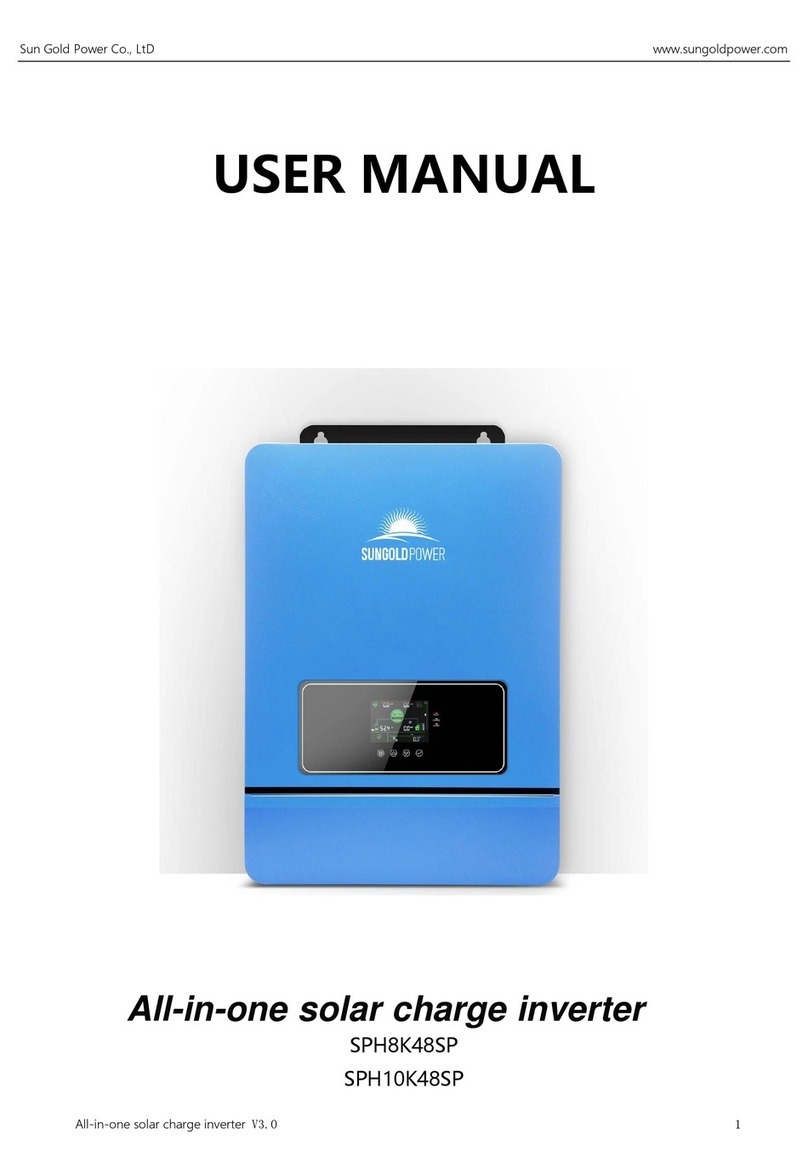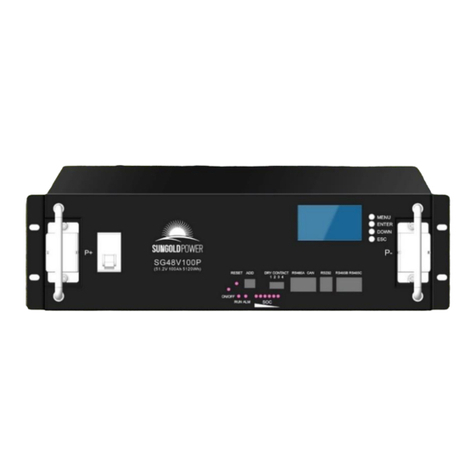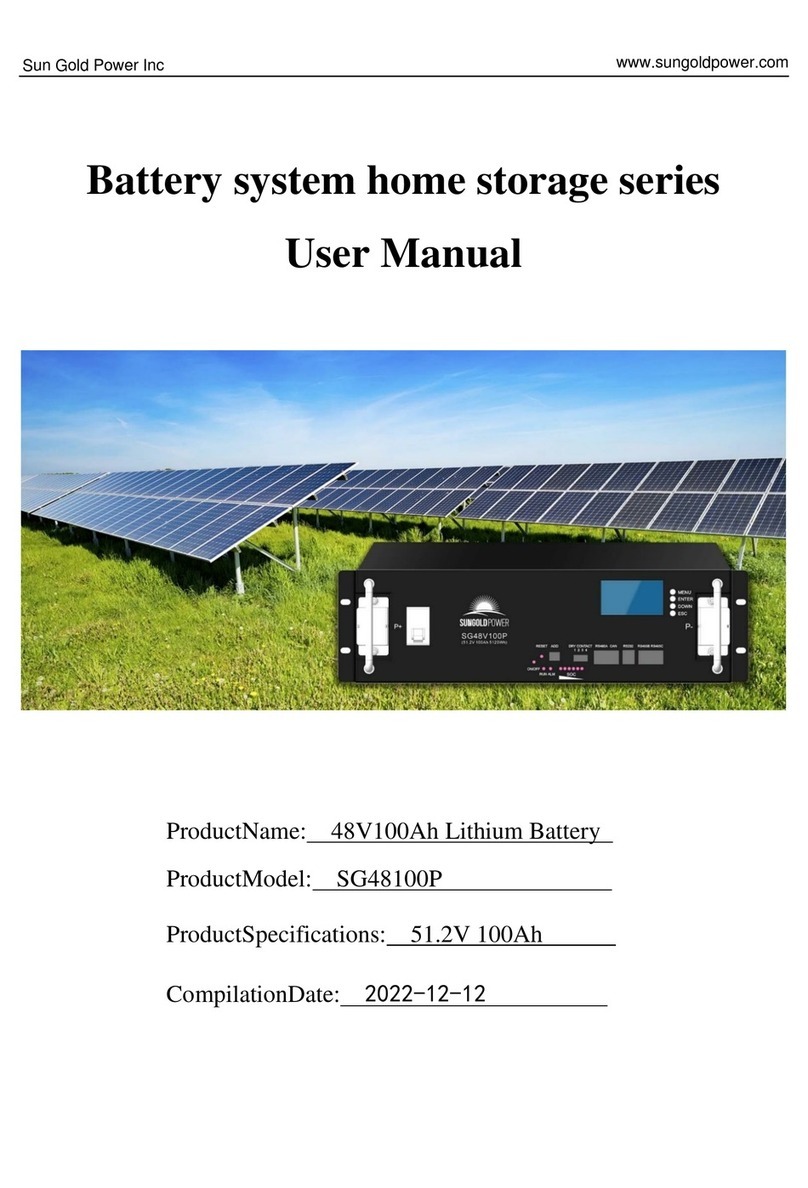
Sun Gold Power Co.,Ltd www.sungoldpower.com
3
1. Important Safety Information
WARNING! Before using the Inverter, you need to read and save the safety instructions.
1-1. General Safety Precautions
1-1-1.Do not expose the Inverter to rain, snow, spray, bilge or dust. To reduce risk of hazard, do not cover or
obstruct the ventilation openings. Do not install the Inverter in a zero-clearance compartment. Overheating
may result. Allow at least 30CM of clearance around the inverter for air flow. Make sure that the air can
circulate freely around the unit. A minimum air flow of 145CFM is required.
1-1-2. To avoid a risk of fire and electronic shock. Make sure that existing wiring is in good electrical
condition; and that wire size is not undersized. Do not operate the Inverter with damaged or substandard
wiring.
1-1-3. This equipment contains components which can produce arcs or sparks. To prevent fire or explosion
do not install in compartments containing batteries or flammable materials or in locations which require
ignition protected equipment. This includes any space containing gasoline-powered machinery, fuel tanks,
or joints, fittings, or other connection between components of the fuel system.
See Warranty for instructions on obtaining service.
1-1-4. Do not disassemble the Inverter/Charger. It contains no user-serviceable parts. Attempting to service
the Inverter/Charger yourself may result in a risk of electrical shock or fire. Internal capacitors remain
charged after all power is disconnected.
1-1-5. To reduce the risk of electrical shock, disconnect both AC and DC power from the RV Series
Inverter/Charger before attempting any maintenance or cleaning. Turning off controls will not reduce this
risk
CAUTION: Equipment damage
The output side of the inverter’s AC wiring should at no time be connected to public power or a generator.
This condition is far worse than a short circuit. If the unit survives this condition, it will shut down until
corrections are made.
Installation should ensure that the inverter’s AC output is, at no time, connected to its AC input.
Warning: Limitations On Use
SPECIFICALLY, PLEASE NOTE THAT THE GLOBAL LF INVERTER/CHARGER SHOULD NOT BE
USED IN CONNECTION WITH LIFE SUPPORT SYSTEMS OR OTHER MEDICAL EQUIPMENT OR
DEVICES.
1-2. Precautions When Working with Batteries
1-2-1. If battery acid contacts skin or clothing, wash immediately with soap and water. If acid enters eye,
immediately flood eye with running cold water and get medical attention immediately.
1-2-2. Never smoke or allow a spark or flame in vicinity of battery or engine.
1-2-3. Do not drop a metal tool on the battery. The resulting spark or short-circuit on the battery of other
electrical part may cause an explosion.
1-2-4. Remove personal metal items such as rings, bracelets, necklaces, and watches when working with a
lead-acid battery. A lead-acid battery produces a short-circuit current high enough to weld a ring or the like
to metal, causing a severe burn.
1-2-5. To reduce the risk of injury, charge only deep-cycle lead acid, lead antimony, lead calcium gel cell,
absorbed mat, or NiCad/NiFe type rechargeable batteries. Other types of batteries may burst, causing
personal injury and damage.
